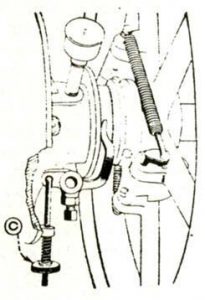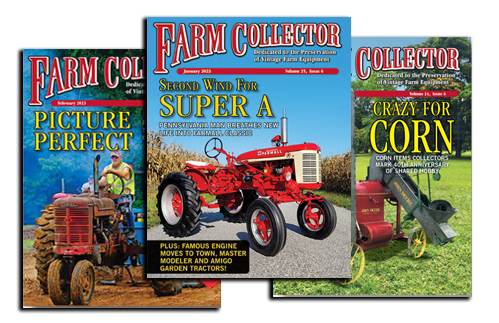7964 Oakwood Park Ct. St. Michaels, MD 21663
The Automobile Quarterly published an article about Frisbie
automobiles in their March 1991 issue. With their permission, I
extracted some information from the standpoint of my interest in
Frisbie marine engines. I also examined advertisements, a number of
Frisbie marine engine catalogs, and some information from the
Cromwell, Connecticut, Historical Society.
Russel A. Frisbie made a considerable impact on the Connecticut
River towns of Cromwell and Middletown. Not only did he organize
the Frisbie Motor Company to build engines, but he was a director
of a bank. He held many patents ranging from internal combustion
engines to a toy cap pistol. Like many other mechanically-inclined
men of his time, he experimented with automobiles and built six of
them. His fine home on Main Street now houses the Cromwell
Historical Society.
Frisbie was a member of a prominent Connecticut family. His
father and grandfather had been involved in manufacturing and
politics and the family owned considerable land. One is certain to
think of a flying plastic frisbee when the name Frisbie is
mentioned. There is a connection; a branch of the family
manufactured metal pie pans which Yale undergraduates first used as
flying saucers.
Frisbie was born in Middletown in 1874- Existing ledgers
indicate that he opened a general store in Wilbraham,
Massachusetts, with $4,000 capital when he was only 15. Later, he
learned drafting, carpentry, and pattern-making as an apprentice
with Pratt and Whitney in Hartford. In June 1895, he married
21-year-old Harriet Esther Coe, also from a wealthy Cromwell
family. Three years later, he secured a franchise to sell bicycles
made by the Orient Cycle Company and he sold and repaired bicycles
in his store for the next two years.
The following year, 1899, he closed the store and set up a
machine shop behind his wife’s family home on Main Street in
Cromwell, calling it the Frisbie Motor Company. There Frisbie began
constructing engines intended for boats, generator sets, cars, and
motorcycles. His first patent, #656,539, dated August 21, 1900, was
for a motorcycle engine. During 1900-1901 he constructed his first
car, the ‘Red Devil.’ It had a two-cylinder opposed L-head
engine, water cooled and rear-mounted. He probably built five of
that model. In 1903, he exhibited a different car at the New York
Auto Show at Madison Square Garden. It had a two-cylinder engine up
front, in what was becoming the standard arrangement. At this point
he came up against the infamous Selden automobile patent. Henry
Ford had the resources to fight the patent, but Frisbie decided to
concentrate on engines rather than pay royalties. The April 20,
1905 issue of Motor Age reported that a six-cylinder Frisbie engine
had been installed in a ‘large touring car.’ The make of
the car was not given.
By 1907, his engine business had outgrown the backyard shop, so
he moved less than two miles to Middletown to a building his wife
owned on Main Street. There he established the Frisbie Motor and
Machine Works. Business continued to expand, and in 1908 he made
some major changes. G. Stanley Heft joined him as
secretary-treasurer, he renamed the business the Frisbie-Heft Motor
Company, and he purchased a brick factory building at College and
Center Streets.
Early in 1909, Frisbie-Heft landed a contract with the
Commonwealth of Massachusetts to produce engines for the
Middletown-built Douglas pumps. They were to be mounted on
horse-drawn trucks and used for spraying insecticide.
Frisbie had not abandoned all hope of producing a car, for in
1909 he built a more modern experimental car with a four cylinder
engine. It was never put in production, however.
Though business was good, the firm had accumulated a debt of
$6500 to the Central National Bank in Middletown. The debt may have
resulted from his auto experiments. Records show that the debt was
reduced to $1500 by turning over to the bank some adjacent
property. In March 1910, California businessman Kirk W. Dyer bought
out Heft’s share of the business. Once again the firm was known
as the Frisbie Motor Company. Prosperity returned and Frisbie spent
an increasing amount of this aboard his Frisbie-powered motor boat,
Sylla. One of his engine catalogs has a picture of the Sylla and
tells that it won a 90-mile race from Middletown to Huntington, New
York, with 26 entrants.
All Frisbie marine engines used overhead valves by 1912. They
were built in two cylinder sizes, 4? x 5 and 6×6 bore and stroke.
They were offered as 1, 2, 3, 4, and 6-cylinder engines covering a
power range of 5 to 175 HP. All the engines used a quick-removable
valve cage. Owners were urged to carry a spare cage. That must have
been a good sales feature, as frequent exhaust valve service was
required in those days. Lubrication was by a mechanical lubricator
with a pump to return oil from the crankcase to the lubricator.
Ignition was jump-spark from an Atwater-Kent battery ignition
system. An extra-cost option was dual-ignition with a magneto to
supply the second spark plug.
During WWI, the factory made aircraft parts. This must have been
profitable, as the company was in good financial condition after
the war. The 1919 catalog offers a line of engines that were
unchanged from pre-war models. There is a slowdown attachment for
trolling which is simply a way to increase intake valve lash.
In 1920 Frisbie seems to have decided that he had worked long
enough. Kirk Dyer bought Frisbie’s share of the business and
the company was reorganized with new directors. In the early
Twenties, the reputation of the engines for quality and reliability
was still good. Some models now had four valves per cylinder.
However, the reorganization had left the company cash-poor, and
this seems to have started the decline of the Frisbie Motor
Company.
In 1924, the company stopped advertising and that fall the city
issued the first of many tax liens against them. However, they
issued new catalogs in 1926 and 1927. In addition to the usual
Frisbie line, the 1926 catalog shows a new modern-looking four
cylinder marine engine.
The tax debts were all settled on August 16, 1928, and that date
probably is of a bankruptcy. Arthur Otterbine, a former Frisbie
foreman, took over the factory building and for many years made
cast-iron stoves, toys, and household goods.
As for Russel Frisbie, he seems to have enjoyed his early
retirement at age 46. He personally rebuilt the Sylla as a fishing
boat and spent many hours casting on the Connecticut River. In the
early Thirties he joined his father, Charles, at the J. & E.
Stevens Company, where he designed and patented a toy cap pistol
which the company produced. In 1938, as part of the dedication of a
new bridge across the Connecticut River, he refurbished the 1901
Red Devil and drove it as the first car to cross the bridge. He
died in 1968 at age 94.
The article in the Automobile Quarterly was part of a ‘Cars
of Connecticut’ series. The photographs shown here are from the
Automobile Quarterly.
There are Frisbie advertisements in many issues on Motor Boating
Magazine and Motor Boat Magazine in the library of the Chesapeake
Bay Maritime Museum. I found two undated catalogs in the Dunn
Collection in the Museum Library, and eight catalogs for 1919-1927
in the Patent Library of the Motor Vehicle Manufacturers’
Association.
In the Wednesday evening, February 19, 1964 edition of The
Mid-dletown Press is an article celebrating Russel Frisbie’s
90th birthday, ‘Russel Frisbie Looks Back on Nine Decades.’
That article is based on interviews with Frisbie.
Until recently, I believed that all Frisbie engines were four
cycle. In the October 1992 issue of Gas Engine Magazine is an
article by Bob Mayeux of Sulphur, Louisiana, about the old
fisherman who wanted his fishing boat buried with him when he died.
That engine was a two cylinder two cycle Frisbie, indicating that
Frisbie built some two-cycle engines in the early days.
Some catalogs show stationary versions of the 7 and 14 HP
Frisbie marine engines plus a 2 HP air cooled horizontal stationary
engine. They offered pumping and spraying outfits with these
engines. Very likely they were the Douglas pump outfits mentioned
earlier, and the air-cooled engine was the one designed for the
1909 contract.
There was an article about the ‘Friendly Frisbie’ in the
April 10, 1924 issue of Motor Boat Magazine. It states that
Frisbie’s first engine in 1898 was an L-head design. In 1903 he
brought out the valve-in-head engines with re-moveable valve cages.
Frisbie Motor Company was organised in 1903 and incorporated in
1907. The article tells of the 1924 reorganization. It is
interesting that each of the new officers was the president of
another manufacturing company.
Frisbie’s Red Devil car is now in the Melton Automobile
Museum in Florida. The Cromwell Historical Society owns a Frisbie
marine engine with an interesting history. I am grateful to
Jonathan A. Stein of Automobile Quarterly and Elizabeth A. Maselli
of the Cromwell Historical Society for their help.
Editor’s Note: Before his death last summer, Max Homfeld was
a frequent contributor to this magazine. This is an article which
he sent to us in January 1993. All of us at GEM miss Max’s
enthusiasm for research and his prolific pen.












